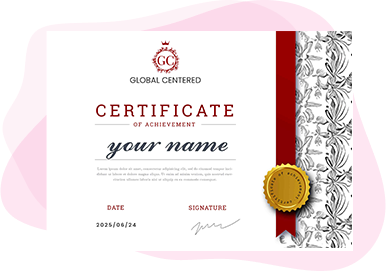GMMRE-Mineral Resource Estimation and Reporting Standards 01
Introduction
This course provides a fundamental understanding of mineral resource estimation and reporting standards used in the mining industry. Participants will learn how resources are classified, estimated, and reported in compliance with international standards such as JORC, NI 43-101, and SAMREC. The training will focus on phosphate, gold, and bauxite deposits, covering basic estimation techniques, sampling protocols, and quality assurance (QA/QC) requirements.
Date
Day | Time | Price | Country |
|---|---|---|---|
Mon – Wed | 8:00 – 10:00 | $5/hrs | Turkey |
Tue – Thu | 18:00 – 19:00 | $5/hrs | Turkey |
Wed – Fri | 20:00 – 21:00 | $5/hrs | Turkey |
Sat – Sun | 18:00 – 19:00 20:00 – 21:00 | $8/hrs | Turkey |
This Training Course Will Highlight
- Basic concepts of mineral resource estimation and classification.
- Introduction to international reporting standards (JORC, NI 43-101, SAMREC, etc.).
- Sampling methods and quality control in resource estimation.
- Basic statistical techniques for resource estimation.
- Importance of accurate and transparent reporting of mineral resources.
Objectives
- Understand the fundamentals of mineral resource estimation.
- Learn about classification systems (Measured, Indicated, Inferred resources).
- Gain knowledge of reporting standards and compliance requirements.
- Develop an understanding of sampling techniques and QA/QC in resource estimation.
- Recognize the importance of transparent and responsible mineral reporting.
Training Methodology
- Instructor-led lectures on mineral resource estimation principles.
- Practical demonstrations of sample collection and validation.
- Basic exercises in resource estimation calculations.
- Discussions on case studies from real-world mining projects.
- Interactive Q&A sessions on mineral reporting compliance.
- Case Study: Resource estimation process for a phosphate, gold, or bauxite deposit.
Organizational Impact
- Enhances compliance with international reporting standards.
- Improves resource estimation accuracy for exploration projects.
- Strengthens technical understanding of mineral classification.
- Supports better decision-making in mine planning.
- Reduces exploration risks through effective resource evaluation.
Personal Impact
- Develops fundamental skills in resource estimation and classification.
- Improves knowledge of regulatory compliance in mineral reporting.
- Strengthens understanding of sample integrity and QA/QC.
- Expands career opportunities in mineral exploration and mining.
- Builds confidence in interpreting and reporting resource estimates.
Who Should Attend?
- Entry-level geologists and mining engineers.
- Junior exploration staff in mining companies.
- Resource estimation analysts and junior mine planners.
- Government mining and geological survey personnel.
- Undergraduate geology and mining students.
- Technical staff involved in mineral reporting compliance.
- Professionals transitioning into the field of mineral resource evaluation.
Course Outline
Day 1
Introduction to Mineral Resource Estimation- What is mineral resource estimation and why is it important?
- Understanding different types of mineral resources and reserves.
- Key principles and terminology in resource estimation.
- Common classification frameworks (JORC, NI 43-101, and SAMREC).
- Overview of geological, geochemical, and geostatistical techniques.
- Introduction to resource classification in a gold exploration project.
Day 2
Sampling, Data Collection, and QA/QC in Resource Estimation- Best practices for sampling in mineral resource estimation.
- Geological logging, sample preparation, and QA/QC protocols.
- Understanding errors and biases in sampling.
- Drill hole data validation and data integrity checks.
- Introduction to geochemical assay methods and data quality control.
- QA/QC implementation in a bauxite exploration project.
Day 3
Basic Estimation Techniques for Mineral Resources- Introduction to resource estimation methods (manual and computational techniques).
- Understanding block models and grade interpolation.
- Introduction to basic statistical analysis in resource estimation.
- Geological controls on mineralization and estimation limitations.
- Role of density and volume calculations in resource estimation.
- Estimating a simple mineral resource.
Day 4
Mineral Resource Classification and Reporting Standards- JORC, NI 43-101, and SAMREC guidelines explained.
- Defining Measured, Indicated, and Inferred resources.
- Key reporting requirements for mineral resource disclosure.
- Understanding Competent Person (QP) responsibilities in reporting.
- Common errors and challenges in mineral resource reporting.
- Mineral resource classification for a phosphate deposit.
Day 5
Integration of Resource Data and Reporting Best Practices- Combining geological, geochemical, and geophysical data for better estimation.
- Using resource estimates for feasibility studies and mine planning.
- Transparency, ethics, and investor confidence in mineral resource reporting.
- Challenges and future trends in mineral resource estimation.
- Introduction to resource estimation software (basic overview).
Cancellation policy
no refund is accepted
Certificate


Step Into a World of Knowledge and Growth
Courses you might be interested in
-
0 Lessons
-
0 Lessons

